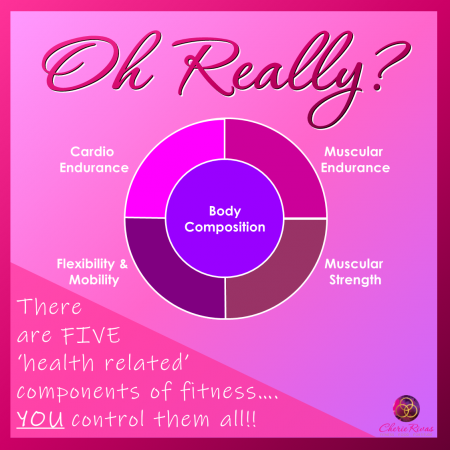If I were to ask you “what is ‘fitness’”, how would you respond? In your mind, is it the ability to sprint 100m in 10 seconds or the capacity to run a marathon? Maybe it’s just chasing after your kids at the local park or walking up a flight of steps whilst piggy-backing a 6-year-old and an overflowing school bag?
When I ask my clients that same question, I typically see their eyes glaze over…. and that’s completely fine because I know how confusing it can all be!
Having never been sporty growing up as a kid, the whole realm of fitness, physiology and exercise ‘science’ was completely foreign to me and overwhelming, to say the least! Over the years my weight-loss roller coaster ride took me through some pretty extreme exercise phases, but even then, I didn’t really understand what I was doing to my body & how I was actually training in a way, that was never really going to support my body to achieve the results I wanted.
Years later though, it all fell into place when I studied to become a Personal Trainer… and those basic principles continue to support me today, not only in my own training routines but also in my capacity to meet my clients at a level appropriate to their existing fitness capacity and their future wellness goals.
So what the heck is ‘fitness’ anyway??
Fitness is actually a range of interrelated components that provides a good indication of your overall health. By understanding the basics you’ll truly begin to accelerate the transformation of your physical functionality, your body composition, your body shape, your energy, and your confidence!
Five ‘Health-Related’ Components of Fitness:

Cardiovascular Endurance (Cardio Fitness):
- Cardiovascular endurance is your physical ability to maintain aerobic exercise for prolonged periods of time…. like playing soccer or jumping rope with the kids.
- It refers to how well your heart, lungs and vascular system can deliver oxygen-rich blood to your working muscles during sustained activities.
- Cardiovascular endurance is essential to building muscular endurance and strength because your muscles need oxygen to keep on working!
Muscular Endurance:
- Muscular endurance refers to repeated or sustained muscle contractions over an extended period of time…. like walking, running, vacuuming or even hanging out the washing.
- Repetitive actions such as low resistance weightlifting, and sustained activities such as rock climbing or tug-of-war, also rely on muscular endurance.
- Without muscular endurance, it becomes more difficult to improve cardio fitness.
Muscular Strength:
- Muscular strength is the amount of force your muscles can exert against resistance for short duration activities. Resistance can include body weight, free weights or any other weighted object. Carting all those shopping bags from the car to the house…. or lifting and carrying tired kids to bed, all require strength!
- Physiologically, muscular strength is the ability of your cells to supply high levels of energy to your contracting muscle fibres over a particular timeframe.
Flexibility & Mobility:
- Flexibility and mobility both refer to the range of motion possible at each joint. This can include reaching up to top shelves or down to the back of cupboards.
- Mobility also requires the appropriate level of strength, balance and coordination to control each movement.
Body Composition:
- Body composition is the proportion of tissues that make up your body. This includes lean muscle tissue, bone, essential fat tissue, non-essential fat tissue and other material such as organs and water.
- It is a far more accurate depiction of health than weight and BMI.
- Maintaining too high or too low body fat percentages can create a range of health problems, particularly if the non-essential fat tissue is excessive, leading to overweight, obesity and other chronic and life-threatening diseases.
What Does it All Mean?
All too often I see new clients who just want to lose weight. Women (and even young girls) in particular, can become obsessed by ‘weight’, and the number on the scales. This can be extremely damaging to self-esteem and confidence.
By refocusing attention towards the refinement and re-creation of body composition, rather than weight loss or the reduction of BMI, allows for a more positive perspective and encourages a mindset that is more readily primed to embrace exercise behaviours and practices. After all, refinement and re-creation align positively towards self-love and reward, whereas loss and reduction relate to deprivation and punishment.
By then also understanding, developing and enhancing the components of ‘fitness’ that support and nurture body composition (cardiovascular endurance, muscular endurance, muscular strength, flexibility & mobility), the physical (and mental) transformation will naturally (and more positively), take place.
It’s a paradigm shift, but an important one!
Still, Need an Extra Boost?
If you really find it challenging to focus on your specific ‘health-related’ fitness needs, I’ve got a whole collection of strategies tucked away, so let’s chat soon about the ways to transform!
You may also like to read:
What is an Exercise Physiologist?









